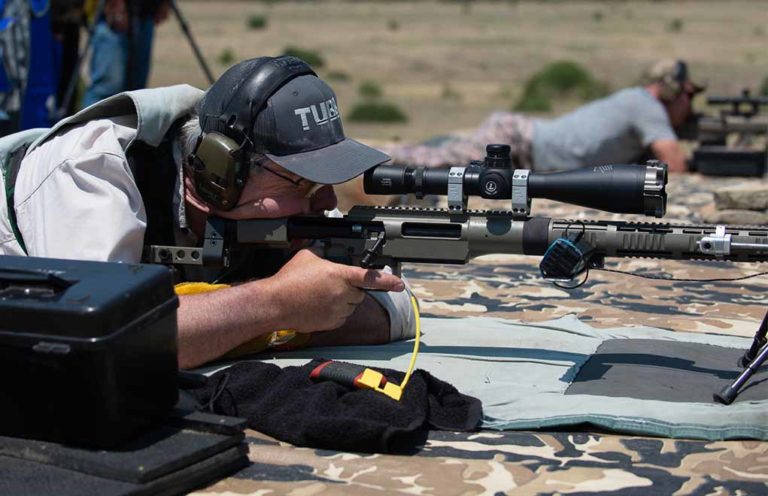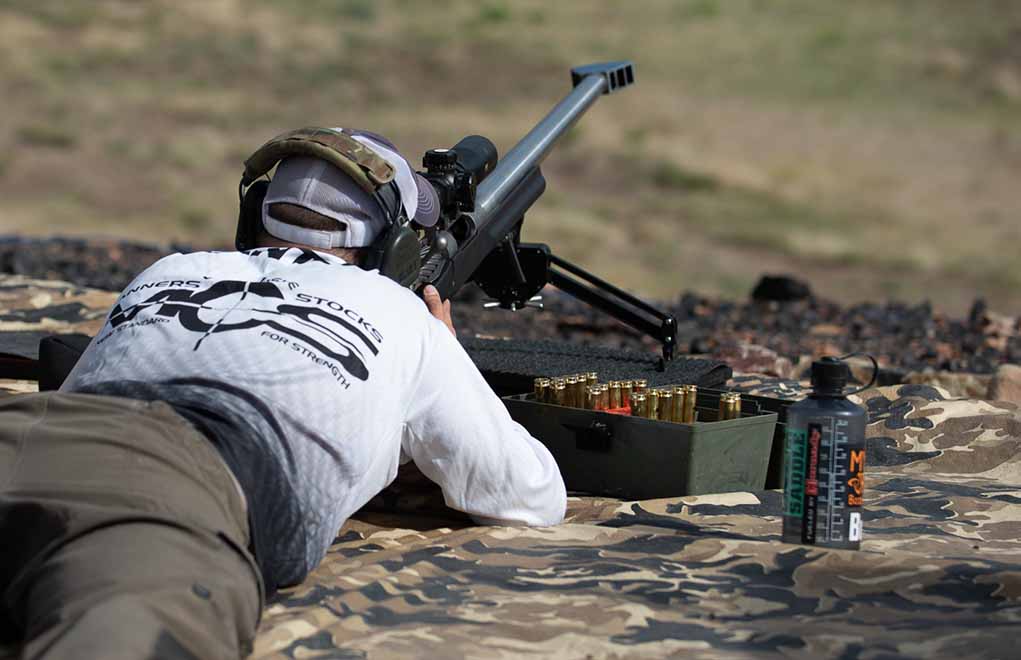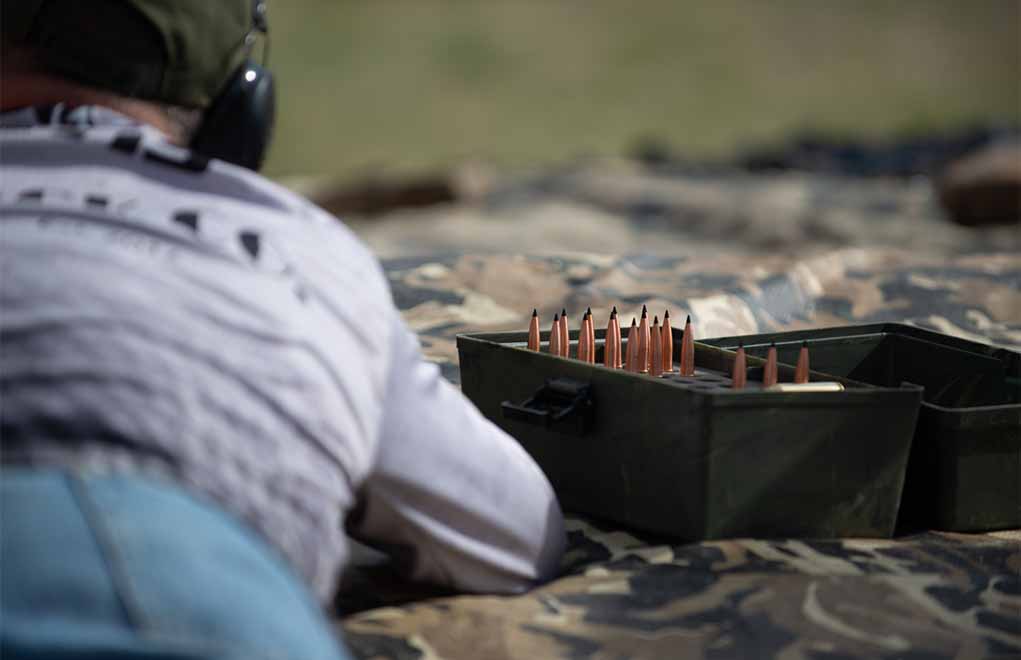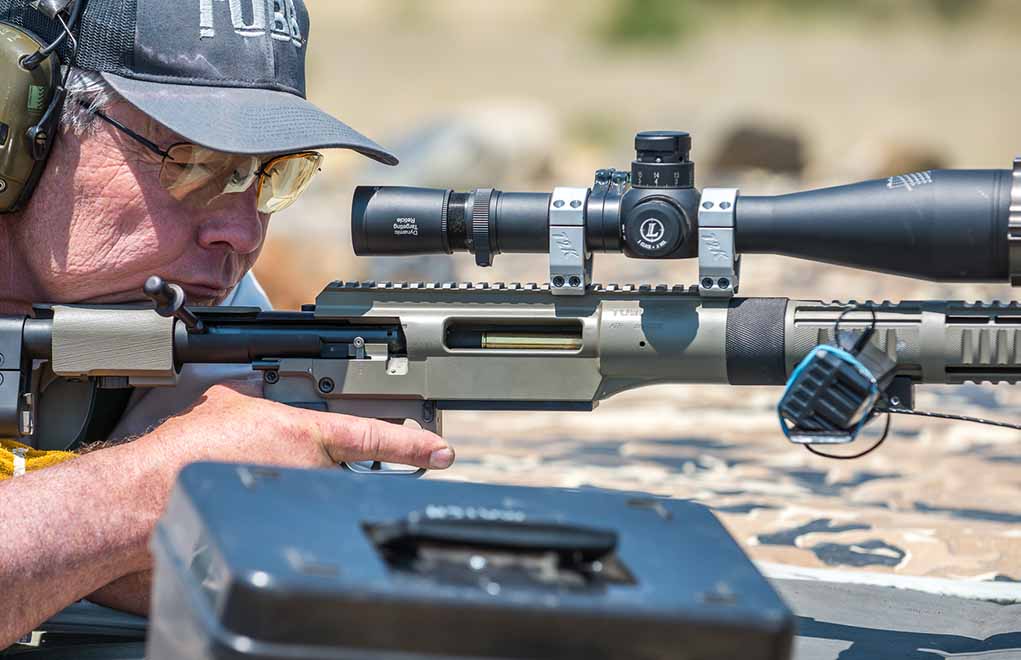

It’s fun. It’s addictive. And it will greatly expand your skillset as a rifleman. Extreme Long-Range Shooting is the arena where your precision marksmanship is truly put to the test.
What You Need To Get Into Extreme Long-Range Shooting:
- An appropriate facility that has a 2,000-yard-plus range.
- The right caliber, one that has the ballistic profile to excel way out.
- A rifle built to extremely high tolerances.
- Quality-made accessories that enhance your marksmanship.
- Of course, a high-powered optic that's well manufactured.
- The discipline to sharpen your skills so you hit at ranges most riflemen only dream about.
Extreme long-range (ELR) shooting captures our imagination in a way few things do. I try to keep my finger on the pulse of the ELR community, and I just returned from a training course, taking my custom .300 Norma Magnum beyond 2,000 yards.
Being successful at ELR distances is a lot of work … and even more money. Not only do the rifles cost more, but the ammo can exceed $8 per round. Finding a suitable safe location is also a crucial consideration. These rifles will shoot far.
The Range
Finding the range to shoot at is the first thing to consider. Out West, we have a lot of empty land. My personal range extends to 1 mile from the firing line. Back off the firing line, and I can easily shoot beyond 2,500 yards. Still, safety is critical, so always be sure of your target, the backstop and your own bullet until it comes to a complete rest. That might be several seconds after the shot is fired.
More Long-Range Shooting Resources:
- Exterior Ballistics Explained
- Ballistics Basics: Initial Bullet Speed
- Which Focal Plane Is Right For You?
- Holding Or Dialing For Drop And Windage?
- Mils vs. MOA: Which Is The Best Long-Range Language?
There are a lot of ranges out West and even down South that focus on ELR shooting. Seek out these locations. The layout and planning have been done; the large, heavy targets are put in place. All you have to do is pay your fees and show up.
Caliber Choice
I put my primary focus on the caliber over the rifle system. The ammunition is the most important consideration for accuracy when shooting ELR distances. You need reliable components, assembled and executed in a way that lowers the standard deviation down to the low single-digit numbers. This can be expensive, so be prepared.

Once that initial sticker shock has passed, get educated on all aspects of reloading. The most successful ELR shooters are handloading, although factory ammo is an excellent starting point. It’s worth keeping that brass and understanding the specs of the cartridge, because it can form a blueprint for getting into ELR.
Rifle and Components
When it comes to rifles, do you go the custom route, or is it better to use a factory offering? Consider a switch-barrel setup such as the new Accuracy International AX50 or the well-established Desert Tech HTi system. Sure, you might spend a premium for a factory rifle, but being able to choose the caliber and switch for various conditions are never bad things. I spent $10,000 for a multi-caliber rifle instead of buying custom and decided that was not the best decision I made, absent any resale intel.
I’m currently working with the Desert Tech HTi in both .50 caliber and 375CT—two of the most common choices out there.
Note: Be sure to pair your new hard-charger with a bipod suitable for the platform. These are much bigger and heavier weapons systems, but your $89 Harris won’t cut it. Explore bipods in the $400 to $500 zone. It’s all part of choosing the right components.
Optics
Many shooters will often default to scopes with more magnification, thinking they need to “see” more, but this is a mistake. You need to dial more and see less. The more air between you and the target, the more chance for distortion.
Even shooting ELR distances, I rarely (if ever) go above 25x on my scopes. Instead, I need elevation, because bridging the distance means dialing on more dope.

I focus on the big players—Nightforce and Schmidt & Bender. Even Vortex’s Gen2 Razor has more than 30 mils of elevation. These scopes, along with the mounts used, will determine just how far you can successfully shoot.
Look up the elevation specs of your chosen optics and realize that you want a mount with a minimum of 40 MOA built in. In most cases, shooters go even more or they opt for the adjustable mounts such as the ERA-TAC, which lets you adjust from 0 MOA to as much as 70 MOA or more.
Once that’s set up, you can then decide if you want a Charlie TARAC Unit or what I call a “taco unit” for extending the elevation. Essentially, it’s a periscope with a built-in or adjustable amount of elevation to bend the light so you can shoot farther. Using a taco unit, I was able to take a factory .338 Lapua Magnum with factory ammo and 100-yard zero and shoot to 4,000 yards. It’s one of the best products for shooting ELR distances and costs less than the average scope.
It’s All About Data
From the assembly of the ammo to recording the details of the system, it’s about the data. In most cases, we’re going to be shooting into the transonic region, meaning the bullet will be going from supersonic to subsonic. In that transition, a lot can happen. Data, data, data.
My final piece of advice: Take your time and go slowly. It’s pretty funny to see a guy shooting beyond a mile who is so close—but not quite there. The drive is to fire just one more; just a few more inches to get that hit; just one more shot; and it’s there.
Don’t do it.

Pace yourself: Give yourself no more than five rounds in any one sitting before sending that next flurry of copper downrange. Shooting 194 rounds to get one hit at 3,850 yards is not accuracy and it’s not precision. It’s … artillery.
ELR Standardization
The ELR community is looking to standardize the process and eliminate the cherry-picked results. The standard has now become focused on accuracy and precision. The target is a standardized 36 inches square. No sheets of plywood to create a wall.
The goal is to arrive on location with no prior practice that day and lay down three hits from a cold bore. You’re allowed to try more than once in a day, but only after a four-hour gap in the attempts. You get two tries a day to accomplish this feat. This is the way most ELR competitions look at the results.
Try it—You’ll Like It
ELR shooting is fun, it’s addictive and it adds several layers beyond your current shooting goals.

Next Step: Get your FREE Printable Target Pack
Enhance your shooting precision with our 62 MOA Targets, perfect for rifles and handguns. Crafted in collaboration with Storm Tactical for accuracy and versatility.
Subscribe to the Gun Digest email newsletter and get your downloadable target pack sent straight to your inbox. Stay updated with the latest firearms info in the industry.

![Best Concealed Carry Guns In 2025 [Field Tested] Wilson Combat EDC X9S 1](https://gundigest.com/wp-content/uploads/Wilson-Combat-EDC-X9S-1-324x160.jpg)


![Best 9mm Carbine: Affordable PCCs [Tested] Ruger Carbine Shooting](https://gundigest.com/wp-content/uploads/Ruger-Carbine-Shooting-100x70.jpg)
![Best AR-15: Top Options Available Today [Field Tested] Harrington and Richardson PSA XM177E2 feature](https://gundigest.com/wp-content/uploads/Harrington-and-Richardson-PSA-XM177E2-feature-100x70.jpg)
